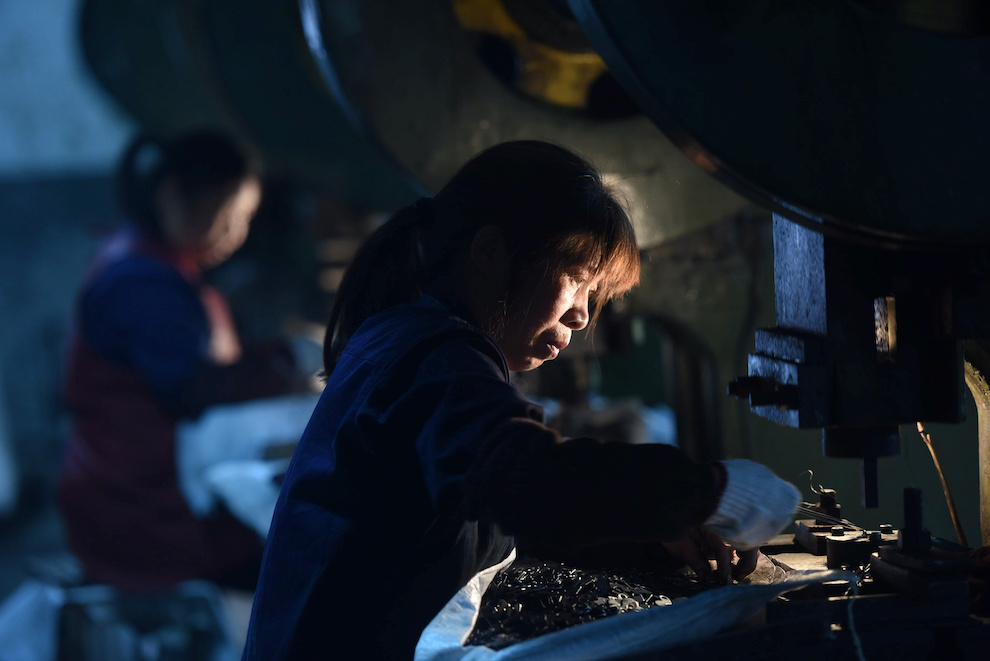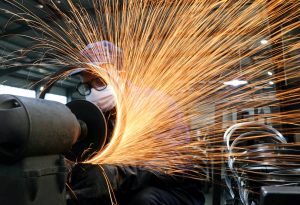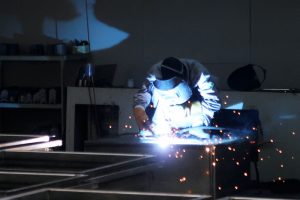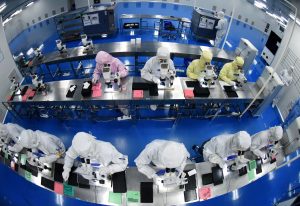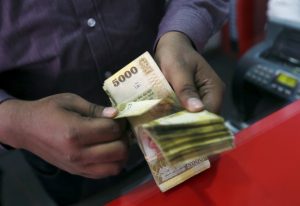The Caixin/Markit Manufacturing Purchasing Managers’ Index (PMI) fell to 48.1 in March, indicating the steepest rate of contraction since February 2020, from 50.4 in the previous month.
The 50-point index mark separates growth from contraction on a monthly basis.
The deterioration in manufacturing conditions was broadly in line with the official PMI released on Thursday, which showed activity contracted at the quickest rate since October 2021. The private-sector Caixin survey focuses more on small firms in coastal regions compared with the official survey.
“The average of the two (PMIs) is now under 50, and apart from the initial pandemic hit in 2020, is now at its lowest since February 2016,” Sheana Yue, China economist at Capital Economics, said.
“Given the composition of the firms surveyed, the sharper reduction in the Caixin reading suggests the deterioration was more significant among smaller private firms and exporters.”
Demand also weakened markedly, both domestically and overseas.
China Orders Decline
A sub-index for new orders declined at the sharpest rate since February 2020 when China grappled with the first wave of Covid outbreaks, leading to a 6.8% contraction in gross domestic product in the first quarter of 2020.
In particular, the decline in new export orders in March accelerated, as surveyed companies said the latest virus outbreaks in China, disruptions in shipping sector and greater market uncertainties from the Ukraine crisis led customers to cancel or suspend orders.
Input cost inflation hit a five-month high, with a number of factories blaming higher prices on tight global supply chains, which were exacerbated by the war in Ukraine.
The world’s second-largest economy, which picked up pace in the first two months of year, is now at risk of slowing sharply as authorities restrict production and mobility in Covid-hit cities, including major economic centres like Shanghai and Shenzhen.
That has slowed output growth with the sub-index for production at 46.4 in March, the lowest since February 2020.
PBOC Facing Headwinds
Government officials have vowed to roll out policies to stabilise the economy as downward economic pressure builds, a cabinet meeting said on Wednesday.
The possibility of the People’s Bank of China cutting reserve requirement ratios in April has risen as economic headwinds intensified, according to a state-run China Daily report, citing experts.
One bright spot in the otherwise sluggish Caixin survey was the employment index, which expanded for the first time in eight months, as factories ramped up hiring after the Lunar New Year holiday.
“The prospect of the war between Russia and Ukraine is uncertain, and the commodity market convulsed,” said Wang Zhe, Senior Economist at Caixin Insight Group, in a statement accompanying the data release.
“A variety of factors resonate, aggravating the downward pressure on China’s economy and underscoring the risk of stagflation.”
• Reuters with additional editing by Jim Pollard
ALSO on AF:
China Manufacturing, Services Contract in First Dual Fall Since 2020
China’s Factory Activity Contracts as Covid Curbs Bite
US Trade Chief Tai Says China Must be Pushed to Change




